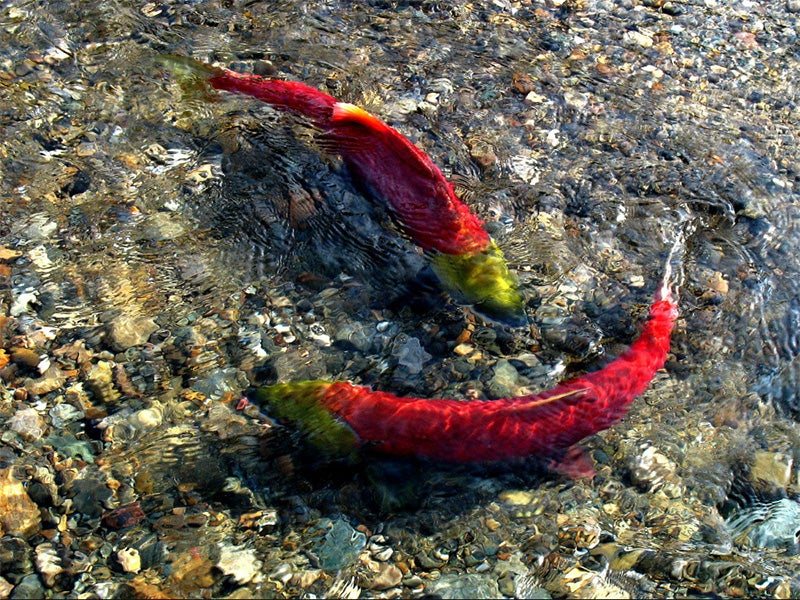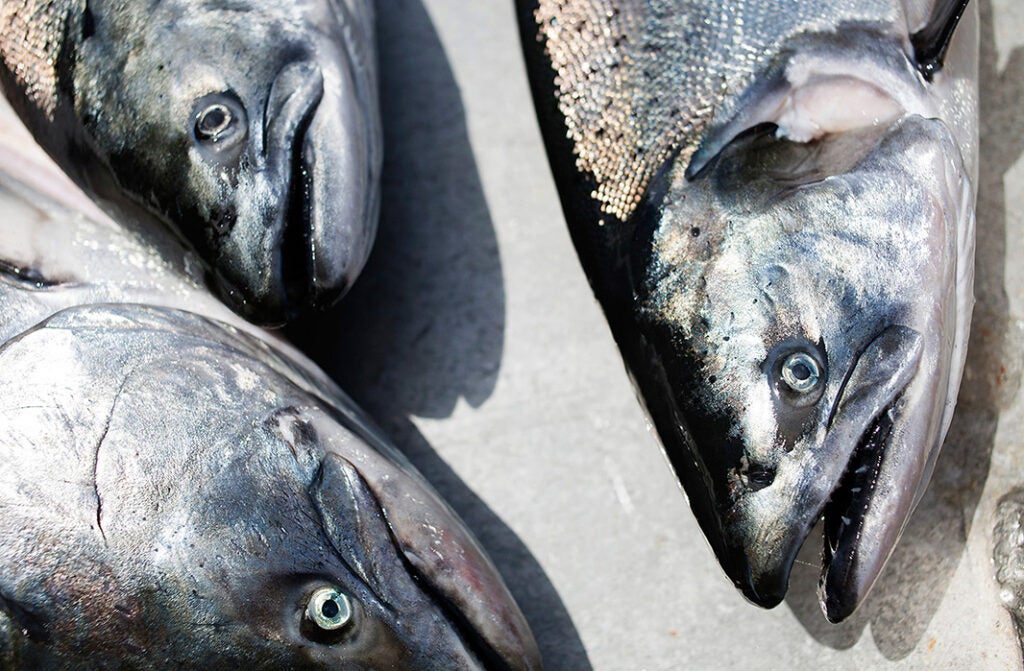Seeking Full Review of GE Salmon Environmental Risks
Wild salmon are a keystone species, but they’re critically endangered in the lower 48 states. Genetically engineered salmon, if they escape into the environment, would push wild salmon closer to extinction by competing with them for food and habitat and introducing new diseases.
Clients
Regional Office / Program
Case Overview
A coalition of fishing, environmental, and consumer groups have joined together to challenge the Food and Drug Administration’s (FDA) approval of the first-ever genetically engineered (GE) animal intended for human consumption.
The new GE salmon was engineered by inserting the DNA from Pacific king salmon and Arctic ocean eel pout into Atlantic salmon to make a fish that is purported to grow twice as fast as a wild salmon. AquaBounty, the company producing the fish, plans to manufacture the eggs at a facility in Prince Edward Island, Canada, transfer the eggs to an undisclosed location in Panama to rear the GE fish, and send the processed filets back to the U.S. for sale. But even the company admits that this convoluted production system is only the tip of the iceberg. It plans to expand GE salmon farming to other countries—including the U.S.—and to sell its fish around the world.
More than 2 million people submitted comments to the FDA asking the agency to better analyze the environmental risks to wild salmon, the environment, and fishing communities. Experts on GE fish and risk assessment along with scientists from U.S. wildlife agencies charged with protecting fish all raised serious questions about the adequacy of the FDA’s review and urging far greater and broader scrutiny. FDA ignored the risks by assuming that fish could never escape confinement and refused to scrutinize environmental impacts if the containment measures should fail. Further, despite AquaBounty’s plans for expansion, FDA refused to look at any impacts beyond just the Canadian and Panamanian facilities.
The lawsuit also challenges FDA’s assertion of exclusive authority to regulate these new animals under its 1938 authority for addressing “new animal drugs.” But those drug provisions were intended to address the safety of veterinary drugs, not man-made animals with wide-ranging environmental risks.
FDA is ill-equipped to evaluate these issues on its own, but it refused to formally consult with expert federal wildlife biologists under the Endangered Species Act in connection with the approval. Scientists within the Fish and Wildlife Service questioned the FDA’s ability and authority to review the impact of genetically engineered animals, and agreed with prominent experts that a full environmental impact statement must be conducted before any decision on approval is finalized. But FDA granted this approval without addressing these concerns.
Earthjustice is working together with the Center for Food Safety to represent the coalition and filed a complaint to challenge the approval on March 30, 2016.

Case Updates
Case page created on November 5, 2020.
